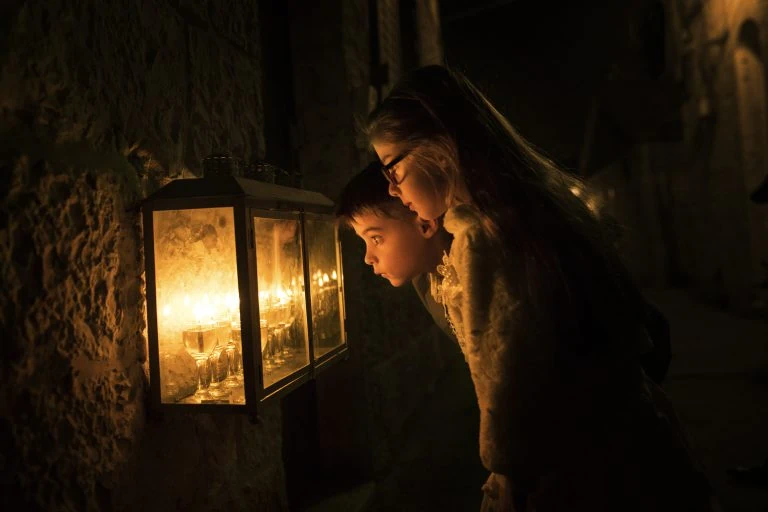Exploring the 7 Gates of Jerusalem
Jerusalem’s ancient walls are one of its defining characteristics. Since its founding more than three thousand years ago, the city has been protected by walls. The walls that stand today date from the 16th century, and contain the 7 gates of Jerusalem, plus an additional 8th gate, called the Mercy Gate, that is no longer open. Many of the gates still contain the huge metal doors that for centuries were locked at dusk to keep out invaders and bandits. Here is a brief guide to the 7 gates of Jerusalem that can be entered today while exploring the city:
The Jaffa and Damascus Gates: The greatest among the 7 gates of Jerusalem
The Jaffa Gate has long been a grand entrance to Jerusalem, and, perhaps, it is the most famous today among the 7 gates of Jerusalem. Numerous pilgrims, invading forces and dignitaries have passed through the gate over the centuries. The gate takes its name from the road leading to it—Jaffa Road–which once went all the way to the Mediterranean Sea port of Jaffa, connecting Jerusalem to the world.
Next to this gate is a large opening cut in the walls in 1898 so that the German Kaiser Wilhelm II could enter on a white horse. The ruling Ottoman empire did not want him to ride the horse through the actual gate because according to a legend riding a white horse through the Jaffa Gate was a sign one would become the city’s ruler. So the Ottoman Empire, who controlled Jerusalem at the time, cut a huge opening in the ancient wall next to the Jaffa Gate. That way the kaiser could still enter the city on his horse, but the Ottoman authorities would not have to worry about him becoming a ruler. This opening forever changed the city walls, and today is one of the few ways vehicles can enter the Old City.
The Damascus Gate is another prominent gate of the 7 gates of Jerusalem. Like the Jaffa Gate, it is named for the road–and eventual destination–coming from it. A gate has been at this location since at least the Second Temple Period, about 2,000 years ago, when the Roman rulers at the time built a gate to the main north-south road of the city. Today the square outside the gate is a gathering place and contains the carts of food and produce vendors. Just inside the gate is one of the Old City’s largest outdoor food markets.
A New Gate
Between the Jaffa and Damascus Gates sits the New Gate. Unlike most of the other 7 gates of Jerusalem that are open today, this gate was not built in the 16th century. Rather, it was added in the late 19th century as another route for Christian pilgrims to enter the city. This gate connects monasteries and churches outside the Old City to those inside the city. The area just inside this gate contains many shops, cafes and restaurants. There are a few Armenian ceramic shops, new wine bars and the Abu Seir bakery, which serves French pastries and coffee.
The City’s North Side: The Lions Gate and the Flowers Gate
These two gates are mainly used by local residents and lead to residential areas in the northern part of the Old City. The Lions Gate takes its name from the ferocious lion-like figures carved on its face. These are actually tigers, which were the symbol of the 13th century Sultan Beybars.
Christian tradition also calls it St. Stephen’s Gate because it is close to the place where tradition says he was stoned to death in the first century. This is also the gate where Israeli forces entered the Old City during their victory in the 1967 Six Day War.
Nearby, the Flower Gate, also called Herod’s Gate, is located between the Lion’s Gate and the Damascus Gate. It likely takes its name from the rosette carved on the gate. But another explanation says it is actually called Bab-al-Sahira, which means Gate of the Watchful, and refers to the nearby cemetery where Muslims who have completed the hajj pilgrimage are buried, and waiting to be resurrected. But this name was sometimes mispronounced as Bab-al-Zahira, which sounds similar to “zahra,” the Arabic word for flower.
In the Middle Ages, some Christian pilgrims who thought that a nearby church was the palace of Herod the Great, began to refer to it as Herod’s Gate.
Interesting sites near these gates include the Church of St. Anne, a compound that also contains the Pools of Bethesda, which Christian connect to several religious miracles. The gate is also close to the first station along the Via Dolorosa, which Christians believe traces the last steps of Jesus before he was put to death; and the Church of the Flagellation, which contains an archaeological museum.
The Zion and Dung Gates
These two gates are on the southern side of the Old City. The Zion Gate is located near Mount Zion as well as a site known as David’s Tomb, and the room connected with the Christian tradition of the Last Supper. This gate leads to the Jewish and Armenian Quarters and is also accessible to cars.
The Dung Gate is the closest gate to the Western Wall. Today it is a busy stop for taxis and tour buses. This was once the place where the city dumped its trash, hence the name that it still uses today.


